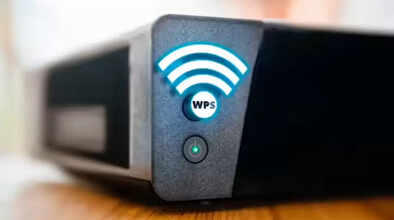What is WPS Button: This button of WiFi router is very useful, if pressed then…

What is the WPS Button? There's a very useful button on your WiFi router, but like most people, you may have overlooked it. We're talking about the button labeled WPS. You probably remember it by now. You must be wondering what this WPS button means, and why it is present on all WiFi routers? Let's understand the meaning and function of this button.
What is the WPS Button?
WPS stands for Wi-Fi Protected Setup, and it's present on WiFi as a small button. It's usually found on the back or side of the router and is easy to recognize because it says "WPS." This button was created by the Wi-Fi Alliance in 2006 to make connecting devices easier. It's a security standard that helps establish a secure connection between the router and the device. Most routers have this feature. Let's find out what this button does.
Connecting Devices Without a Password
The primary function of this button is to connect devices to WiFi without a password. It allows you to easily connect to any router without having to enter a lengthy password. To do this, go to the WiFi settings on your phone, laptop, or smart TV and select the WPS option. Then, press the WPS button on the router. Doing so will connect your device directly to WiFi without a password. This button is especially useful if your WiFi password is too complicated or if you have guests over.
Connecting Multiple Devices
If you have multiple smart devices, such as printers, smart speakers, IP cameras, smart bulbs, or other IoT gadgets, the WPS button allows you to easily connect them without the hassle of entering passwords. This process is especially useful for devices that don't have a keyboard or are difficult to type. This not only saves time but also simplifies the setup process.
Disclaimer: This content has been sourced and edited from Navbharat Times. While we have made modifications for clarity and presentation, the original content belongs to its respective authors and website. We do not claim ownership of the content.

